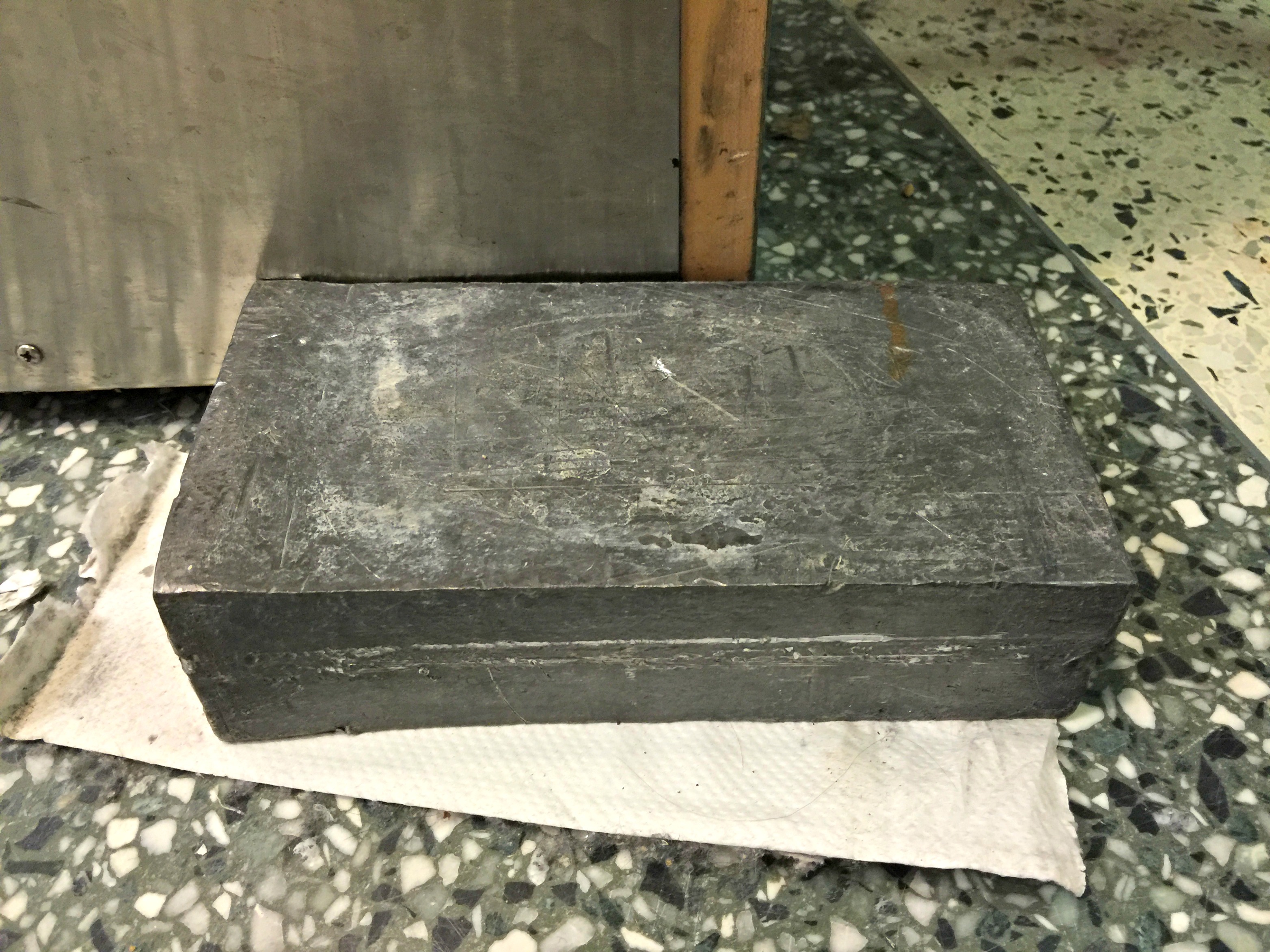Doors can be problematic. Especially when your automatic column chromatography machine is in the room with the glove boxes, there’s only one rotovap in a fume hood in a little side room, there are three organic labs connected by doors, and you have to keep passing between them to find the smallest dewar. This may seem like trifling minutiae, but when your elbows are bruised from being used to open doors because you can’t use gloved hands, it may be the last straw on a bad day. My organic chemistry lab used doorstops (and whatever else fit in the doorjamb) for years without incident—until the fire inspector saw all the open doors.
Organic labs are rated to contain a fire for a certain amount of time. It’s 30 minutes for our lab, but that’s only if the doors are closed. We’d gotten lazy and often didn’t kick the doorstops back out after we were done moving between rooms. The fire inspector came at such a moment, and nearly gave us a violation order, which would have involved a fine and necessitated our PI going down to a court hearing in Brooklyn. He really didn’t want to go to Brooklyn, so we tried to earnestly commit to lab safety.
We had a group meeting. My suggestions weren’t taken seriously. The idea of hiring a lab butler to open doors was shockingly ignored, and the hint that slipping the fire inspector a bribe might do the trick didn’t even draw laughter. There was talk of installing a device on the underside of the door to make it open when stepped on, like those self-opening car trunks, but nobody ever bothered. All we determined was that we could prop open the doors only when we were actively doing something between different rooms—and to be there to say so when the fire inspector showed up again.
The fire department’s rules must be followed, and although we may grumble about it, we know that the rules are there to keep everybody safe. A few students even got paranoid about fires and have since started kicking the doorstops out all the time—sometimes 10 seconds after I’ve opened the door. We once had a group party that included dancing to YouTube videos in the group room, and one student seriously injured her knee (it was that kind of party). She hobbled in on crutches the next day, and couldn't open the door without help. As long as she was in the room, we used her leg as an excuse to keep the doors open, but she quickly got better and we went back to using elbows or knocking.
About a year before our confrontation with the fire department, the doors created a different type of problem. We used anything that worked as a doorstop, including a mysterious brick. The fact that this brick was brought over from a physics lab should have been a clue, but my group chewed through doorstops every few months, and we were tired of kicking them in as hard as possible once they got old. The doors to the lab are really heavy, so when somebody found a silvery brick that was hard to move, even with a foot, it seemed like a stroke of good luck.
The brick was carried over to one of the organic labs. From the first day, we jokingly said, “Hey, this kind of looks like a lead brick.” But it didn’t concern us too much. The brick also proved to be versatile. I once used it to exterminate a giant cockroach. Several months later, we were still nonchalant, saying things like, “Why did you move the lead brick so far out into the hallway? You know it’s hard to move.”
Finally, one student noticed that continually banging the brick with the door was chipping off little bits. Now we said, “Oh no, what if that really is a lead brick? It was probably used for radiation shielding in that physics lab.” So, being scientists, we ran tests. A postdoc carved off a chunk and dissolved it in HCl. Then he diluted it with acetonitrile and put it through the mass spec (ESI+ mode). The result clearly showed lead chloride and the acetonitrile adduct:
The postdoc contacted Environmental Health and Safety. They probably disposed of it properly, but I haven't been down to the basement recently, so hopefully they’re not using it to prop open the door to the Hazardous Waste Storage area. This just goes to show that it’s easy to become complacent and overlook a potentially dangerous object—especially if it’s as useful as that brick.
Quartzy is the world’s No. 1 lab management platform. We help scientists easily organize orders, manage inventory, and save money. We’re free and always will be. Visit Quartzy.com or reach out at info@quartzy.com.
Interested in writing for The Q? Send us an email!
Share this:

Margarita Milton
Margarita Milton grew up in New York City. She received her BS in Chemistry from Stony Brook University after working on the synthesis of aromatic belts in the lab of Nancy Goroff. She is currently a graduate student in the Nuckolls Lab at Columbia University, where she creates novel architectures involving perylene diimides. In her spare time, Margarita likes to read and write.
